Noise isolation sewer pipe itself
Sound permeability of housing, especially apartments in a storey building, has become commonplace. The noise created by the music included in the next apartment can still be influenced, but the sounds emanating from the engineering systems of the sewage system, the pipeline is another matter. Quite often, the effect of flowing down water becomes a familiar situation, which is difficult to put up with. For such urgent problems, there will be practical and effective solutions.
Where does the noise come from

The search for the source and its elimination is fundamental in solving any technical problem. But still, the noise arising in any pipeline, including sewage, is the usual vibration caused by fluid flowing through the system. And the reasons are as follows:
- defects of the inner surface of the pipe;
- poor installation of the pipe in places of fasteners and clamps;
- clogging inside the pipe, resulting in a reduction in cross section and throughput;
- fluid leakage through valves;
- engineering errors, or rather, the rate of runoff is higher than the calculated figure.

Unpleasant noise in sewer pipes can be avoided if you follow several rules:
- Modern materials used in the production of sewage, not always equivalent to replace the past. Polyethylene, which replaced the cast iron, practically does not absorb the emerging noise.
- Seal selection. Careless approach to this issue, may in the future remind of the arisen noise in the sewer pipeline. Not every seal has the ability to isolate sound. Therefore, the purchase of a seal can only be a waste of money, and the desired effect will not be achieved.
- When designing a sewage system in a house, in order to avoid noise and unpleasant sounds, it is more rational to take this system outside the premises. More precisely, to “hide” all future engineering communications in walls and interfloor overlappings. Walls and all kinds of liners will act as sound barriers.
Soundproofing methods

Rapidly developing technologies and new building materials appearing in the markets, allow to eliminate any problems of engineering networks.
- Pipe with the property of "noiseless". Having laid out not a small amount of money that not everyone can afford, the buyer is guaranteed to receive a high-quality pipe. Its main feature is precisely good sound insulation, due to the large number of layers of polypropylene, which can drown out any noise.
- Sound insulation made over the existing pipe using special materials. In addition to insulation from noise, most often these materials can perfectly insulate the sewer system. The positive point can be called low cost. Of the minuses - the complexity of the work and time spent.
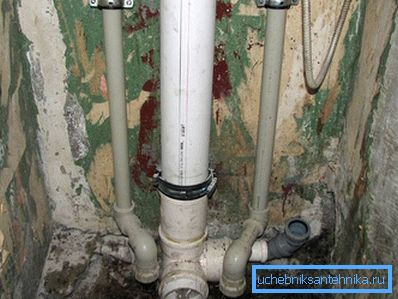
Types of materials for sound insulation
Choosing the second solution to this problem, you should know what to look for in the construction market. Noise isolation is most often performed by applying a certain layer, completely covering the surface of the pipe. What is worth taking?
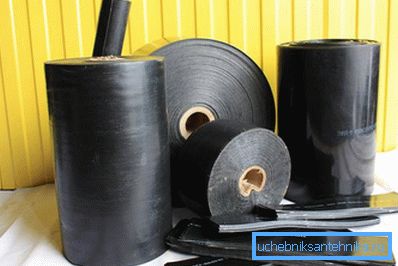
- Roll insulation. This material has been used and continues to be a solution in the fight against noise. Despite the emergence of more modern insulating materials, in many cases it remains a great alternative.
- Polyethylene. A polyethylene foam “spacesuit” on a pipe protects living quarters not only from unpleasant sounds, it has established itself as a wonderful heat insulator. The material does not allow the formation of condensate, as well as mold and mildew.
- Insulation tape. The material tightly covers the surface of the pipe, forming many layers that take on all the noise.
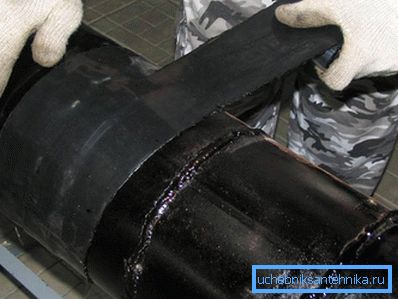
The main advice when choosing materials is the specification in which the sound-absorbing properties should be indicated, namely the number of decibels that insulation can delay.
Is heat insulation necessary?
Following the example of private houses, where you have to take care not only of the internal, but also of the external network of the sewer system, you should consider thermal insulation options. This decision is relevant both when replacing existing pipelines, and when building a new house and arranging the engineering network. Poor insulation contributes to pipe damage, and the result is noise. What is best to use in such cases:
- Polyethylene cylinders. The material is cut before mounting on the pipe. After wrapping just glued together.
- Mineral wool or basalt. Insulation in the form of mats lies around the perimeter of the pipe. There is the possibility of thermal insulation of pipes of large diameters.
- Original thermal insulation in the form of a shell. After installation, it is fastened with a lock.
What materials to choose
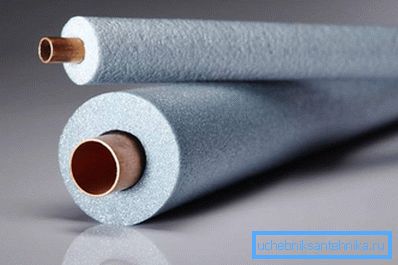
- The first simple insulation is any porous material.
- Mineral wool is resistant to various conditions, even with a large temperature difference.
- Rubber is one of the ideal options to protect the system from the cold. The possibility of tight wrapping and excellent tightness - this is undeniable advantages.
- Fiberglass is used on pipelines that are influenced by external temperature.
- Polyethylene insulation is not inferior to other types of insulation and has the widest use because of the ease of installation.
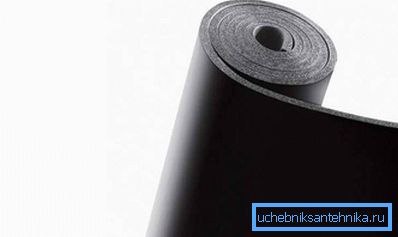
The whole process of arranging the sewer system can hardly be called easy. Any error in eliminating one problem may cause the next. Improperly installed insulation will soon require replacement and cost. Care and attention eliminate problems with sewage for many years.